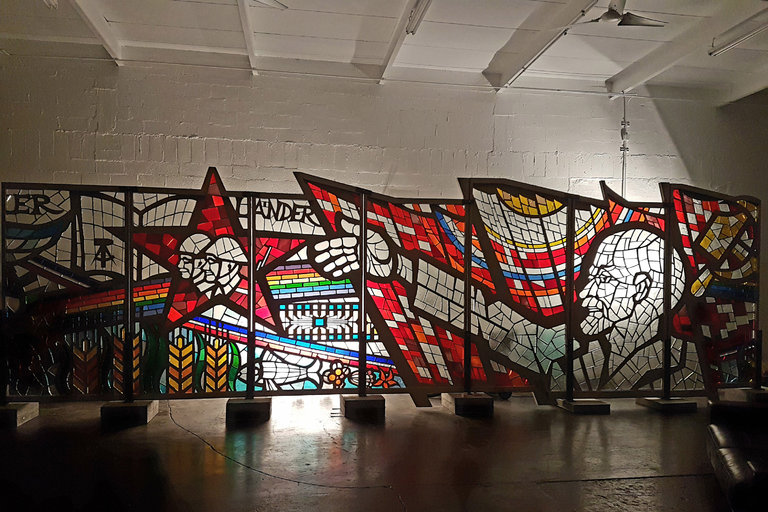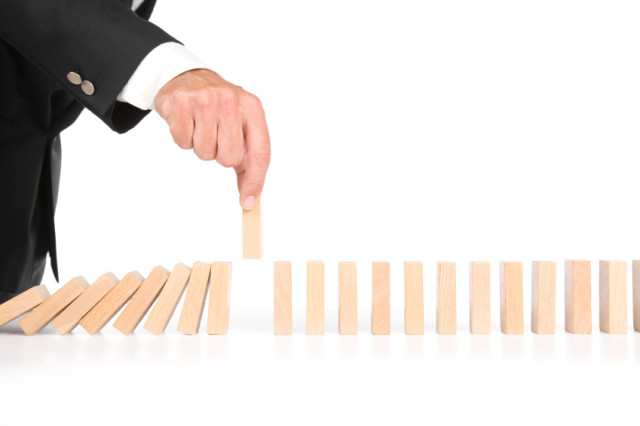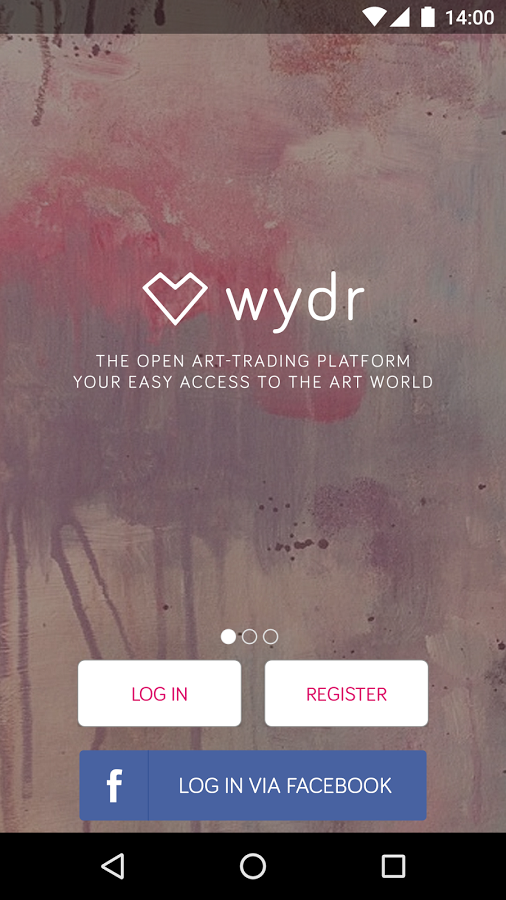Label: art sales
Friday 25th November 2016Stasi Stained Glass
When one thinks of secret police, art is rarely the next subject to come to mind - unless it's in conjunction with the quality of censorship. Yet apparently, for the East German secret police post-World War II, it was quite a common thing to commission huge stained glass pieces commemorating particularly significant iconography - Lenin, naturally, as well as doves to symbolize the peace they believed they were protecting.
One particularly large piece commissioned in 1979 by Erich Mielke, the head of the Ministry of State Security, will be going on sale in conjunction with the Art Basel Miami Beach art fair that everyone is so particularly enamoured of. The price tag is a whopping $21.4 million dollars, although many appraisers scoff at such a ridiculously high price tag.
Sjeng Scheijen, an associate researcher at Leiden University who curated a recent exhibition at the Drents Museum “The quality of this piece is certainly not exceptional from an artistic point of view..If they will sell it for this price, you will see a storm of the same kind of art coming on the market, because many of these kinds of stained glass windows are very often in buildings from the ’70s and ’80s that aren’t used any more.”
The artist, Richard Otfried Wilhelm, is still alive today, but even he is not particularly convinced it's worth such a huge sum of money. There is a long and convoluted story about the provenance of the piece in an article by the New York Times
“It’s very colorful and beautiful, but what’s most important is that it shows that the artists in the G.D.R. were not free,” said Susanna Lillienthal, a conservator who helped track down the provenance of the piece. “They did what the dictators wanted. I grew up in the G.D.R. and I still have a hard time with it. But we need to save the dark parts of our history, too.”
An admirable sentiment, especially as it seems like the specter of facism is rising again in the modern world with the election of Donald Trump and the continued reign of Vladimir Putin. Remember: facism almost never makes worthwhile art, because, as Lillienthal said, you have to do what the dictators want - not what your artistic soul desires.
Posted on November 25th 2016 on 02:16am
0 Comments
Friday 04th November 2016Art Market Disruptors
One of the biggest buzzwords spawned by the tech industry in recent memory is 'disruption'. It more or less does what it says on the tin, but in this usage it has the added context of being a disruption of the current market structure driven by technological innovation. Uber is a prime example - they've taken ubiquitous smartphone technology and used it to completely disrupt the taxicab market. Airbnb used the internet and mapping services to completely disrupt the hotel industry by allowing random people to rent out apartments or even spare rooms on a temporary basis.
There are many other successful examples, and far more failed examples, but the most notable failure (from our perspective, anyways) is the failure of any of the disruptive technologies to catch on in the art market.
We've covered a number of the possible disruptors over the past few years, ranging from new and exciting online auction platforms to the Tinder-style art-buying app Wydr. But as of yet, none of them has really had anything close to what could be termed a disruptive impact.
Many theories have been floated about why these technologies haven't caught on in the art world, but one of the most interesting ideas is that the art market's disruption happened well before anyone was using the term. The advent of computer-managed databases for price indexes, forecasts about auction prices and art investment projections completely changed the way business was done in the art world already, in a way that neither taxis or hotels could be.
Of course, in parallel, one might argue that hotels and taxis were disrupted by the advent of online bookings and telephones to summon a cab, but those disruptions occurred so long ago that the market had matured enough to become ripe for another disruption. It's unlikely that we'll see another disruption of the taxi industry until driverless cars become commonly available, and another when autonomous drones really take off - and who knows when that will be.
With that parallel in mind, is the art world ripe for another disruption? Some want to claim that the art world is simply too real and present to be disrupted by a digital technology, but perhaps that's because "the art world" is too monolithic an entity to be disrupted by a single event, rather than the fact that it is immune to disruption.
Digital photograph destroyed entire companies, and the ability to virtually walk through photorealistic representations of museums may completely tank actual visitor numbers. Only time - and genius - will tell.
Posted on November 04th 2016 on 07:49pm
0 Comments
Wednesday 10th August 2016Swipe Right for Art!

Whether or not you've used it, you've probably at least heard of the popular dating app Tinder. Tinder was a trailblazer in a number of ways, but one of the more unexpectedly popular things to come out of the app was actually a method of user interaction with the app itself. Users are presented with a sequence of potential matches, and they can 'swipe right' to indicate a potential attraction or 'swipe left' to indicate disinterest.
This has given rise to a number of references in popular media of late, but it's also catching on in the wider world of app development. Maybe that should be 'in the Wydr world of app development', actually, since that's one of the signature features of the new app designed specifically for art buyers.
Wydr incorporates the now-popular swipe method of interaction in the way you'd expect. Users are shown a series of art pieces and swipe left or right to indicate their feelings about a piece, and gradually the service develops a profile of the type of work they like. At the same time, it's building a popularity rating for the piece itself as well as the artist, which is then fed back into the database to help determine what will be shown next.
“Our user is a typical Gen X/Y who wants to decide for himself what to like! Wydr changes how people interact with art. No curator, as all artworks are community curated. Artists get feedback on what users like, and users see what’s hot," explained co-founder Matthias Dörner in an interview with popular tech blog TechCrunch.
As they say: Art Galleries are for the 1%, wydr is for the 99%.
The app only launched at the beginning of 2016, but it's already received quite a bit of attention from artists and buyers the world over. Wydr claims to have an active monthly user count of over 10,000, which isn't too shabby for the first six months of activity. Naturally the service will grow in utility as it grows in terms of the artists it represents and the more it learns about user taste, so we'll likely be hearing from them again in the near future.
If you're interested in submitting your own work to be sold through the app, you should know that they charge a whopping 30% commission on pieces sold, but they also help to subsidize shipping costs. This might not seem like much, but the cost of safely shipping a unique piece halfway around the world can quickly mount up.
Posted on August 10th 2016 on 07:41pm
0 Comments
Wednesday 08th July 2015Art Travel Ban
Tourism is one of the world's great industries - after all, the world is an incredibly beautiful and exciting place. Over the years a number of specialized versions of tourism have evolved, some more prominent than others, but one that has been gaining steam lately is tourism combined with art purchasing (as strange as it might just seem). Not everyone seems to view this with the same equanimity, unfortunately, which can lead to some strange and perhaps misguided attempts to correct the perceived problem.
Germany, which is home to the second largest art auction market in the world after the United States, has recently decided to propose laws to govern the purchase and sale of art by non-residents. Apparently, it is quite common for visitors to Germany, whether casual tourists or wealthy collectors, to purchase art during the course of their trip, which obviously has cultural and economic benefits for everyone involved. This has provoked a knee-jerk reaction among some elements of German society, which lead to the development of the bill in question.
Needless to say, a complete ban on traveling purchases is a rather extreme measure that has aroused the ire of art buyers, auctioneers and artists all around the world. The theory is that the law will prevent Germany's cultural and historical artifacts from being sold off to wealthy collectors in other parts of the world, but it may in fact become a stifling measure that inspires artists and auctioneers to move to more friendly and tolerant cultural climes.
While the law hasn't actually been formally put on the books yet, it has a serious chance of passing. The Culture Minister, Monika Grütters, plans to bring the draft law to Chancellor Angela Merkel's cabinet for approval during August. This is likely to create a major upheaval in the multibillion dollar world art market if it passes, of course, and who knows what kind of negative impact it will have on Germany's role in the artistic community. It seems a bit strange in a modern, information-friendly global economy that this kind of ban is felt to be necessary, so here's hoping that the rest of the German government understands the negative impacts this ban would have on a whole host of related industries, not just the artistic world.
Posted on July 08th 2015 on 04:18pm
0 Comments
Friday 13th June 2014Auction House Competition

The art world is famous for price tags as lofty as the masterpieces they represent. Staggering prices are commanded every time a famous work changes hands, and even the members of the public who aren't the target market are fascinated by the eye-popping sums. In the past, however, this type of big ticket sale has always been the province of the auction house; the Sotheby's, the Christie's, and occasionally a private sale brokered by a top-tier gallery. However, at the latest art fair in Basel (which we discussed previously in our post about the best cities for art lovers), an incredible challenge to the supremacy of the auction house has appeared.
New York is unquestionably the American centre for art auctions (and arguably the world centre as well, though doubtless many in London would disagree), and during May of this year, $2.2 billion USD worth of art sales took place during the course of two weeks. Unquestionably an impressive figure, but the Art Basel fair that just finished up recently featured 285 galleries and dealers selling a whopping $4 billion USD worth of art. In fact, on the very first day of the fair alone, over $55 million dollars worth of sales had been made - by only 11 galleries.
A piece by Jeff Koons, the subject of one of our recent artist spotlights, was sold for $5 million, but the true sales crown belonged to a famous piece by famed Pop Art paragon Andy Warhol, a pink-tinted self-portrait of the artist wearing his infamously iconic fright wig which sold for a whopping $32 million USD, which equals the record price ever achieved at an auction house for a Warhol self-portrait.
So what does this really mean for the auction house world paradigm? In the long run, probably not a great deal. Art sales are a very unique type of commerce, and the auction house is unlikely to be completely replaced by the art fair, but it will definitely have to step aside to make room. There is little doubt that the snobbery traditionally associated with the auction house will push some away, but at the same time, it provides a different experience to the mad rush of the art fair. Even though digital downloads essentially killed the record store, a comparable situation isn't likely to occur in the art world. Art fairs and auction houses may be selling the same calibre of piece, but the experiences they offer are sufficiently different - and the demand for artwork so voracious - that they will likely co-exist for a long time to come yet.
Posted on June 13th 2014 on 05:05pm
0 Comments
Wednesday 30th April 2014Online Art Sales Don't Threaten the Offline Art World

Much has been made of the e-commerce revolution, and with good reason. It has completely changed the way we interact with businesses, whether they are retail stores or service providers or any other kind of business. But one of the downsides to the widespread adoption of e-commerce has been the way that it has negatively impacted stores in the physical world, so-called 'brick and mortar' stores (as opposed to digital storefronts, aka websites). Stores have been closing doors left and right as they struggle to stay afloat in a tricky economy, especially when it's so much cheaper to move an entire business online in order to save money.
While it's taken certain areas of the retail economy more time to move towards a digital marketplace, the art world is no exception. It's now possible to buy prints from thousands of different online stores, and as you've probably learned from your Gallereo page, it's equally easy for individual artists to begin to make a name for themselves with a little bit of digital know-how and some sales talent.
Interestingly, though, instead of online art sales replacing the traditional offline world of galleries and auction houses, it appears that both sales channels are able to operate side by side with a minimum of interference. According to a report released this week by British insurer Hiscox, online fine art sales are going to more than double in the next five years, reaching an impressive $3.76 billion USD, up from its 2013 market value of $1.57 billion USD.
The reason the two markets don't collide, according to Robert Read, head of fine art at Hiscox, is “Young collectors are looking for artwork which is easy to buy and available at a wide range of prices," and when that fact is coupled with the comfort level of younger generations when it comes to making online purchases, there is a whole new market being created. So rather than supplanting the world of auction houses, the online art market should rather be considered an expansion of the art market as a whole, which makes it relatively unique in terms of the e-commerce world.
"The findings indicate that online art e-commerce will not exist as a separate entity – it will augment and co-exist with what is happening in the real, physical art world," Hiscox said.
So digital artists, take heart! Your prospects only stand to grow in the coming years, so make sure that you read up on all the best tips and tricks to ensure your digital sales success!
Posted on April 30th 2014 on 11:33pm
0 Comments
 When one thinks of secret police, art is rarely the next subject to come to mind - unless it's in conjunction with the quality of censorship. Yet apparently, for the East German secret police post-World War II, it was quite a common thing to commission huge stained glass pieces commemorating particularly significant iconography - Lenin, naturally, as well as doves to symbolize the peace they believed they were protecting.
When one thinks of secret police, art is rarely the next subject to come to mind - unless it's in conjunction with the quality of censorship. Yet apparently, for the East German secret police post-World War II, it was quite a common thing to commission huge stained glass pieces commemorating particularly significant iconography - Lenin, naturally, as well as doves to symbolize the peace they believed they were protecting. One of the biggest buzzwords spawned by the tech industry in recent memory is 'disruption'. It more or less does what it says on the tin, but in this usage it has the added context of being a disruption of the current market structure driven by technological innovation. Uber is a prime example - they've taken ubiquitous smartphone technology and used it to completely disrupt the taxicab market. Airbnb used the internet and mapping services to completely disrupt the hotel industry by allowing random people to rent out apartments or even spare rooms on a temporary basis.
One of the biggest buzzwords spawned by the tech industry in recent memory is 'disruption'. It more or less does what it says on the tin, but in this usage it has the added context of being a disruption of the current market structure driven by technological innovation. Uber is a prime example - they've taken ubiquitous smartphone technology and used it to completely disrupt the taxicab market. Airbnb used the internet and mapping services to completely disrupt the hotel industry by allowing random people to rent out apartments or even spare rooms on a temporary basis. Whether or not you've used it, you've probably at least heard of the popular dating app Tinder. Tinder was a trailblazer in a number of ways, but one of the more unexpectedly popular things to come out of the app was actually a method of user interaction with the app itself. Users are presented with a sequence of potential matches, and they can 'swipe right' to indicate a potential attraction or 'swipe left' to indicate disinterest.
Whether or not you've used it, you've probably at least heard of the popular dating app Tinder. Tinder was a trailblazer in a number of ways, but one of the more unexpectedly popular things to come out of the app was actually a method of user interaction with the app itself. Users are presented with a sequence of potential matches, and they can 'swipe right' to indicate a potential attraction or 'swipe left' to indicate disinterest. Tourism is one of the world's great industries - after all, the world is an incredibly beautiful and exciting place. Over the years a number of specialized versions of tourism have evolved, some more prominent than others, but one that has been gaining steam lately is tourism combined with art purchasing (as strange as it might just seem). Not everyone seems to view this with the same equanimity, unfortunately, which can lead to some strange and perhaps misguided attempts to correct the perceived problem.
Tourism is one of the world's great industries - after all, the world is an incredibly beautiful and exciting place. Over the years a number of specialized versions of tourism have evolved, some more prominent than others, but one that has been gaining steam lately is tourism combined with art purchasing (as strange as it might just seem). Not everyone seems to view this with the same equanimity, unfortunately, which can lead to some strange and perhaps misguided attempts to correct the perceived problem. The art world is famous for price tags as lofty as the masterpieces they represent. Staggering prices are commanded every time a famous work changes hands, and even the members of the public who aren't the target market are fascinated by the eye-popping sums. In the past, however, this type of big ticket sale has always been the province of the auction house; the Sotheby's, the Christie's, and occasionally a private sale brokered by a top-tier gallery. However, at the latest art fair in Basel (which we discussed previously in our post about the best cities for art lovers), an incredible challenge to the supremacy of the auction house has appeared.
The art world is famous for price tags as lofty as the masterpieces they represent. Staggering prices are commanded every time a famous work changes hands, and even the members of the public who aren't the target market are fascinated by the eye-popping sums. In the past, however, this type of big ticket sale has always been the province of the auction house; the Sotheby's, the Christie's, and occasionally a private sale brokered by a top-tier gallery. However, at the latest art fair in Basel (which we discussed previously in our post about the best cities for art lovers), an incredible challenge to the supremacy of the auction house has appeared. Much has been made of the e-commerce revolution, and with good reason. It has completely changed the way we interact with businesses, whether they are retail stores or service providers or any other kind of business. But one of the downsides to the widespread adoption of e-commerce has been the way that it has negatively impacted stores in the physical world, so-called 'brick and mortar' stores (as opposed to digital storefronts, aka websites). Stores have been closing doors left and right as they struggle to stay afloat in a tricky economy, especially when it's so much cheaper to move an entire business online in order to save money.
Much has been made of the e-commerce revolution, and with good reason. It has completely changed the way we interact with businesses, whether they are retail stores or service providers or any other kind of business. But one of the downsides to the widespread adoption of e-commerce has been the way that it has negatively impacted stores in the physical world, so-called 'brick and mortar' stores (as opposed to digital storefronts, aka websites). Stores have been closing doors left and right as they struggle to stay afloat in a tricky economy, especially when it's so much cheaper to move an entire business online in order to save money.



